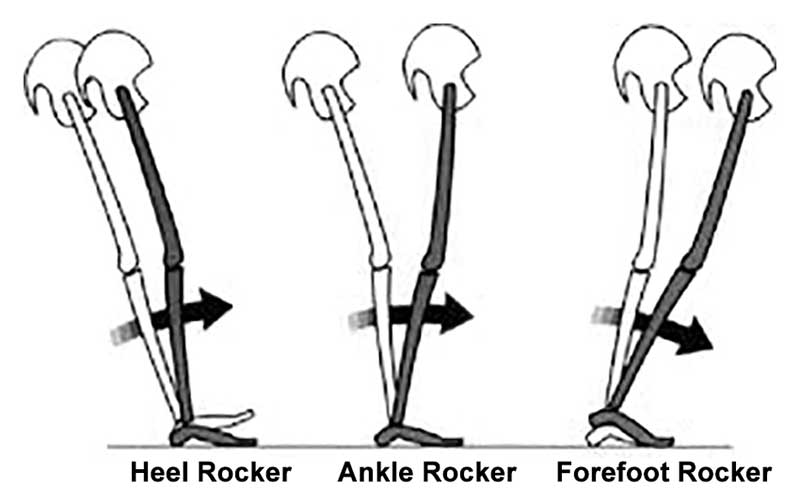Short leg and mottling of the skin
Have you ever heard of Klippel-Trenaunay Syndrome? I hadn’t either, until I had a patient come in with low back pain and a gait issue and said she had it.
Evidently, in 1900, noted French physicians Klippel and Trenaunay first described a syndrome in 2 patients presenting with a port-wine stain and varicosities of an extremity associated with hypertrophy of the affected limb’s bony and soft tissue. Klippel-Trenaunay-Weber syndrome (KTWS) is characterized by a triad of port-wine stain, varicose veins, and bony and soft tissue hypertrophy involving an extremity (1).
Most cases KTWS are sporadic, although a few cases in the literature report an autosomal dominant pattern of inheritance (2). There is no racial predilection, even distribution between males and females and presents at birth or during early childhood (3). It generally affects a single extremity, although cases of multiple affected limbs have been reported. The leg is the most common site followed by the arms, the trunk, and rarely the head and the neck(4).
This patient had a history of low back pain with a recent epidural steroid injection. Exam highlights included a R sided leg length discrepancy approximately 5mm (tibial and femoral). Pelvic tilt to the right (for LLD) with anterior rotation of that side of the pelvis, posterior on the opposite side (counter clockwise pelvic distortion pattern). Lumbar flexion off 60/90 with all motion occurring in the lumbar spine (ie: no hip hinge), extension 20/30, lateral bending 30/45 BL with pain ipsilateral. Decreased low back endurance of <50 seconds in extension.
Right lower extremity was smaller (appeared hypoplastic) than left and had multiple discolorations in the skin (see pictures). L sided Q angle > R (12 vs 8 degrees). Less internal rotation of the right lower extremity compared to left, but with normal limits. Gait revealed a shift and hike to the right during stance phase with an increased arm swing on the right. Foot intrinsics were weak (lumbricals, EDL, FDB, dorsal intrerossei)
She walked in a pair of Chaco sandals with allowed much greater calcaneal eversion bilaterally R > L.
MRI revealed paraspinal marbling at the lower part of the lumbar spine, improving as you move rostrally. Small disc herniations at L3/4, 4/5, 5/S1, which did not effect the exiting nerve roots. Degenerative changes in the lumbar facet joints. There was no radiographic evidence of instability.
Impression:
It seems that she did not have enough intrinsic for the strength to stop calcaneal eversion in her Chaco’s and therefore this was causing increased foot pronation. This, combined with her leg length discrepancy, was contributing to increasing the lordosis in her lumbar spine, causing facet joint irritation. This was compounded by weakness and lack of endurance of the lumbar paraspinal musculature. The effects of the Klippel-Trenaunay Syndrome are evident with the IPO plasticity of the right lower extremity and accompanying musculoskeletal abnormalities.
What did we do?
- Gave her endurance exercises for the lumbar spine.
- Gave her propriosensorv exercises for the lumbar spine
- Recommended she continue with the 5 mm sole lift.
- Advised getting rid of the Chaco sandals as they allow too much calcaneal eversion and sticking to a shoe that has a stronger/larger heel counter.
- acupuncture to improve circulation and proprioception as well as muscular function
- we will monitor weekly for the next 4 to 6 weeks.
All in all, and interesting use with a little twist (not a torsion, of course!) : )
1. http://reference.medscape.com/article/1084257-overview
2. Ceballos-Quintal JM, Pinto-Escalante D, Castillo-Zapata I. A new case of Klippel-Trenaunay-Weber (KTW) syndrome: evidence of autosomal dominant inheritance. Am J Med Genet. 1996 Jun 14. 63(3):426-7.
3. Sung HM, Chung HY, Lee SJ, Lee JM, Huh S, Lee JW, et al. Clinical Experience of the Klippel-Trenaunay Syndrome. Arch Plast Surg. 2015 Sep. 42 (5):552-8.
4. http://reference.medscape.com/article/1084257-clinical









































